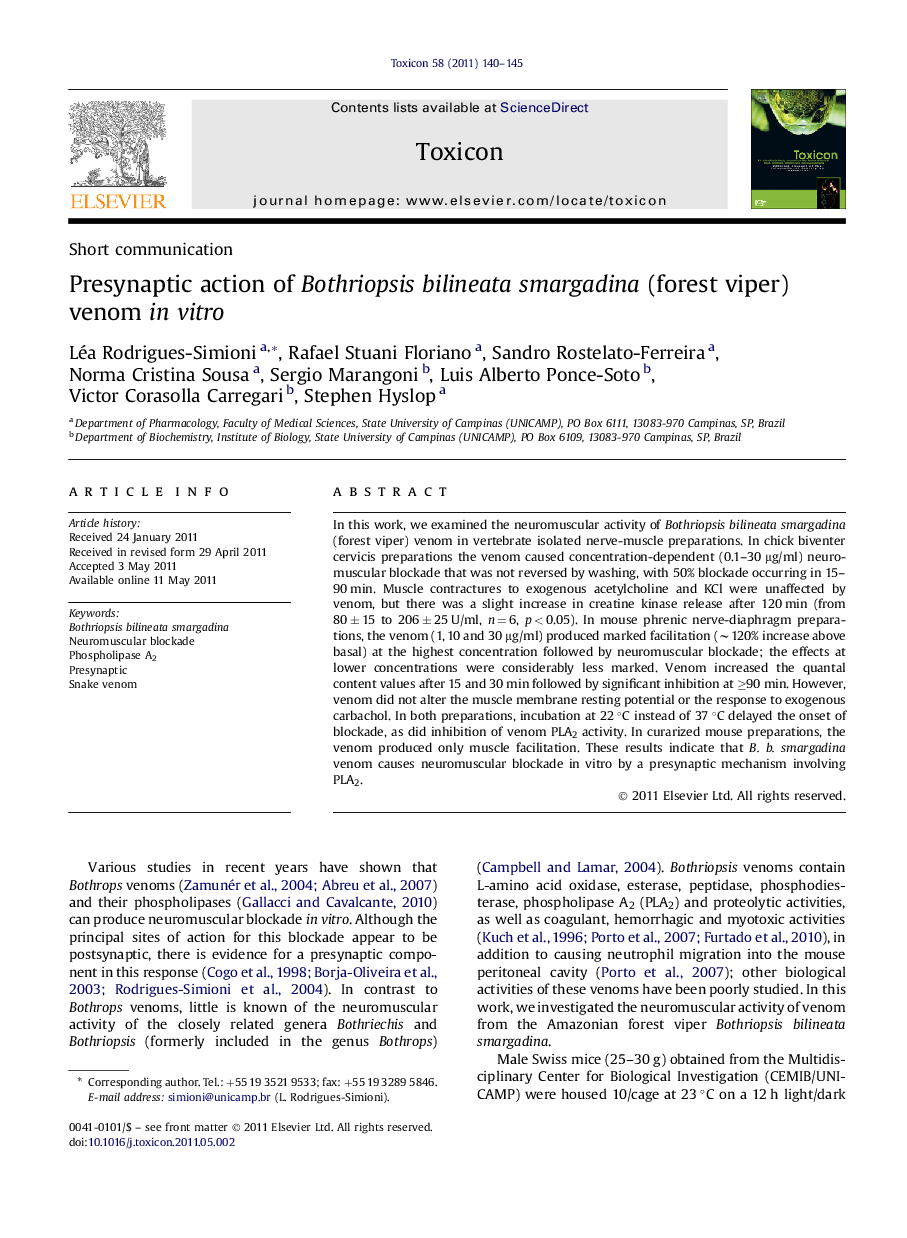| Article ID | Journal | Published Year | Pages | File Type |
|---|---|---|---|---|
| 10880066 | Toxicon | 2011 | 6 Pages |
Abstract
In this work, we examined the neuromuscular activity of Bothriopsis bilineata smargadina (forest viper) venom in vertebrate isolated nerve-muscle preparations. In chick biventer cervicis preparations the venom caused concentration-dependent (0.1-30 μg/ml) neuromuscular blockade that was not reversed by washing, with 50% blockade occurring in 15-90 min. Muscle contractures to exogenous acetylcholine and KCl were unaffected by venom, but there was a slight increase in creatine kinase release after 120 min (from 80 ± 15 to 206 ± 25 U/ml, n = 6, p < 0.05). In mouse phrenic nerve-diaphragm preparations, the venom (1, 10 and 30 μg/ml) produced marked facilitation (â¼120% increase above basal) at the highest concentration followed by neuromuscular blockade; the effects at lower concentrations were considerably less marked. Venom increased the quantal content values after 15 and 30 min followed by significant inhibition at â¥90 min. However, venom did not alter the muscle membrane resting potential or the response to exogenous carbachol. In both preparations, incubation at 22 °C instead of 37 °C delayed the onset of blockade, as did inhibition of venom PLA2 activity. In curarized mouse preparations, the venom produced only muscle facilitation. These results indicate that B. b. smargadina venom causes neuromuscular blockade in vitro by a presynaptic mechanism involving PLA2.
Related Topics
Life Sciences
Biochemistry, Genetics and Molecular Biology
Biochemistry, Genetics and Molecular Biology (General)
Authors
Léa Rodrigues-Simioni, Rafael Stuani Floriano, Sandro Rostelato-Ferreira, Norma Cristina Sousa, Sergio Marangoni, Luis Alberto Ponce-Soto, Victor Corasolla Carregari, Stephen Hyslop,
